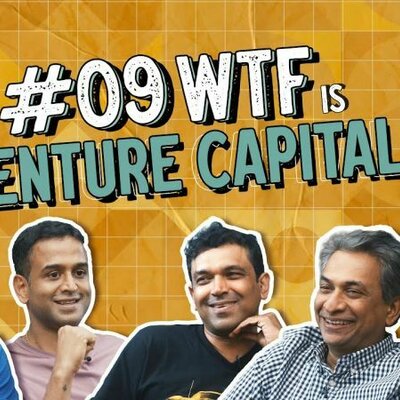PART II: Keep Calm And Pick A ‘Listable-Founder’ Mindset
- Published
- Reading Time
- 4 minutes
The (Publicly) Listed Venture-backed Tech Company is Dead!
Softbank and similar mega-sized investors are cited too often nowadays as a way to sustain staying private for longer than needed.
Long live the Public listing of the Venture-backed Tech Company! I don’t see how it can be any other way. The inevitable push towards public listings in the US this year is a reminder of that.
Studies have shown that the most valuable companies are built for years, if not decades, post-listing, with over 90% of market cap creation in such companies getting built after the IPO. Who wouldn’t aspire to having such stories in their Venture Fund portfolios?!
Let’s assume that the chances of an IPO (or Direct Listing) are dramatically slim. Let’s assume that even if everything falls in place in the Indian market, a 25-30 company portfolio basket (which is a typical VC single-fund portfolio size – some have 15, others have 35) will yield one such company in a fund cycle.
Even then, the quintessential question for an institutional VC has got to be: Is every one of the founders you are picking capable of this incredibly tough marathon? Yes! – every one of those founders! I’ve seen several startup blog references to the journey being analogous to running a marathon, as if everyone is capable of it. We don’t think most founders getting funded are even remotely hinting at an IPO-like journey; the tenacity, sense of purpose and founding team that needs to be in place for that scale and longevity of ambition is non-trivial.
(Of late, every other fund has some optionality built into their investing strategy with 5-10% of their total corpus – where these rules are relaxed. The optionality is to allow for some other objective to be met – building founder relationships, investing in new sectors, etc)
Consider this: SEBI (the Indian regulator who regulates capital markets) defines, rather simplistically, large caps and mid caps as the top 100 companies and #101-#250 respectively, in terms of market capitalization, (Market Cap = Valuation, as commonly referred to in venture).
A mid cap company in India is approximately in the 5,000-25,000 cr market cap range (there maybe 10-20% variances to the lower and higher ends of these ranges, depending on market bullishness / bearishness). This is, incredibly, somewhere between US$750 mill and US$3.5 billion. Imagine the number of ‘soonicorns’ (a round or so away from possibly getting to unicorns) and the unicorns that would automatically be amongst the top 250 companies by market cap in the country!
Note: Idea alert for startup media: You could easily, therefore, create a proxy index of estimated / reported valuations of last rounds and track a proxy mid cap and large cap index of VC-backed tech companies in India. And show movements on a quarterly basis.
As we mature as a fund house at Blume, raising our 3rd fund and becoming more international and institutional in our LP base, we are becoming more selective than ever before. Why do we come to work every day? – for great journeys with great founders. Yes, of course; that’s what every VC says!
However, it’s a bit different this time for Blume. We thought our job was cutting a small cheque and then passing it onto a larger VC once certain metrics and milestones were achieved. Then, we realized we have much more to give to our founders as the company moves to the growth stages as well – act as internal sounding boards, gather outstanding external mentors, help in talent acquisition at scale, enable access to capital sources well beyond Series A doors etc. So, we decided we needed to be bolder, add more capital and more bandwidth to portfolio founders and, not surprisingly, trim portfolio selection to the companies and founders that matter most. You will get some great founders, you will miss others. That comes with the territory and is a healthy reflection of the burgeoning number of high quality founders and startups. But how do both sides enjoy a great match in purpose and ambition?
One of the key filters in my mind is this nuance of the founder’s preparedness for an IPO-like journey, or her or his desire to build a ‘listable’ company. It’s rapidly becoming a necessary mindset for us to pick a great set of founders.
That said, is the mindset alone sufficient for a great outcome? Not entirely.
Is an IPO absolutely the only exit outcome that solves for returns for most stakeholders? Not necessarily.
Is the mindset an essential ingredient to create a brand where your team members will proudly tell their children as well as their parents “ “I work for / used to work for that company”? I think so!
Applying these new shades of lenses seem to filter out a lot of noisy signals and eases the hard work in finding great long-term partners. Since it is evident that these kind of partnerships are the most enjoyable and most profitable, we need to design everything around Pipeline selection for those outcomes.
There are a dozen external variables that can slow down or kill a company in a hyper-competitive market, one that’s like an obstacle course with founders having limited tools and resources (most tools and great team members get picked up / purchased along the way), but it is also an obstacle course of ultra-marathon length. So, the lead runner in the company not being equipped for the thought of an ultra-marathon is non-negotiable.
Picking founders who think they’re going to stroll on a 10K run or shoot for a half marathon as a successful outcome marker, since it satisfied their personal goals, is slowly becoming a non-starter for the Blume team. We are focusing on the founders aiming for the ultra-marathon finish. It is not that such founders or we have all the answers but they tend to be seekers – they ask tough questions of themselves and everyone around them, are always learning and are never interested in shooting for a goal that’s short of anything but the finish line of that ultra marathon.
Is there an easy set of questions that test this tenacity of an ultra-marathon startup runner? I wish! That’s like using a marriage compatibility questionnaire to tie the knot and determine whether this will be a “death do us apart” marriage.





